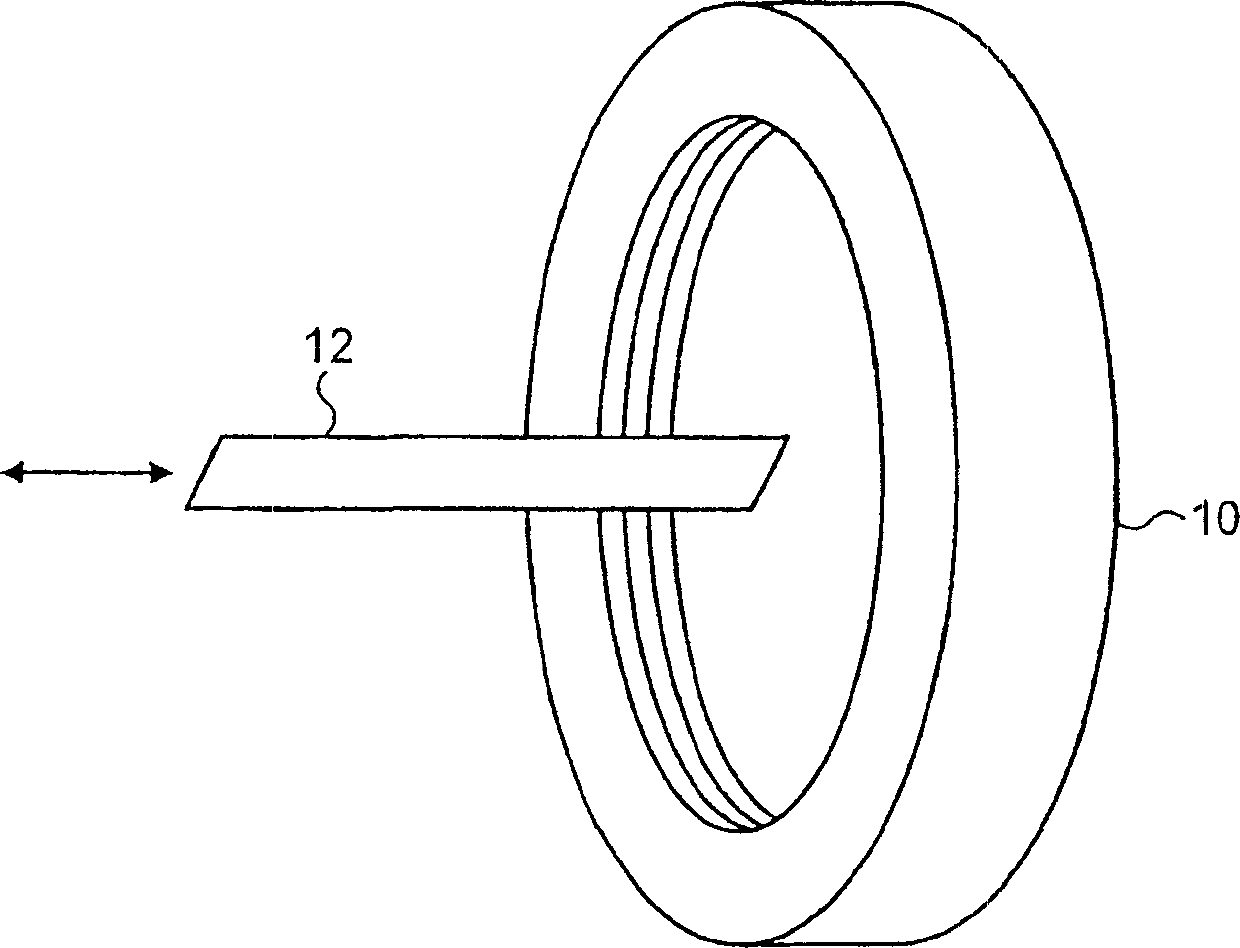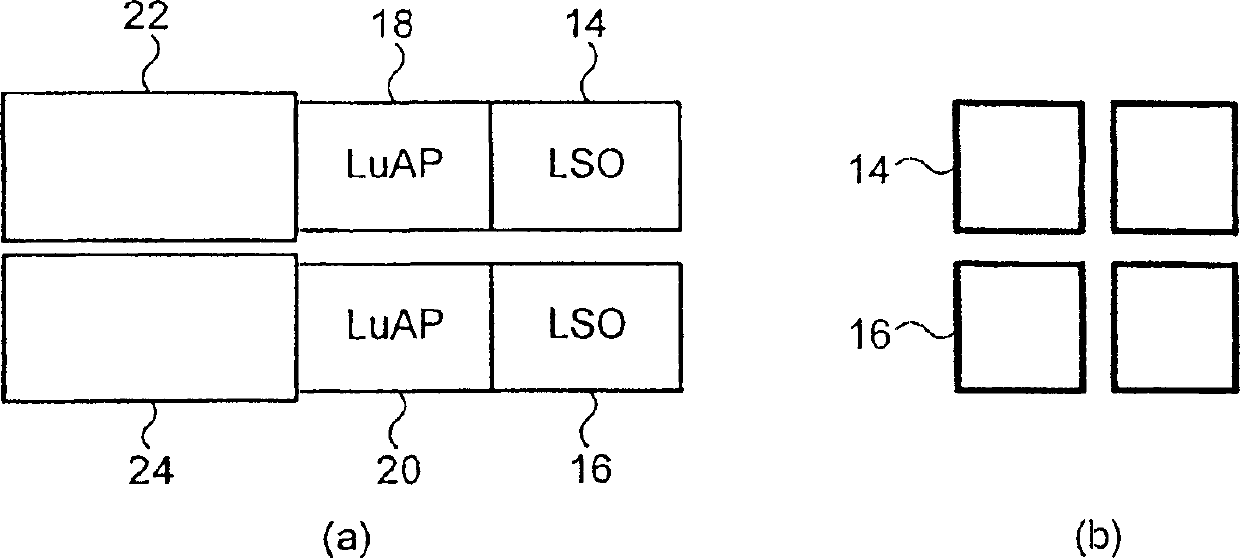PET scanner
A technology of positron emission and scanner, which is applied in the direction of instruments, circuits, electrical components, etc., and can solve problems such as the difficulty of determining the collision layer
- Summary
- Abstract
- Description
- Claims
- Application Information
AI Technical Summary
Problems solved by technology
Method used
Image
Examples
Embodiment Construction
[0035] PET embodying the present invention uses a scintillator comprising lutetium-based crystals. Specifically, the scintillator embodying the present invention uses LuAP or LuYAP, and hereinafter, the acronym LuAP may represent LuAP or LuYAP. This material has many properties that make it useful as a scintillator.
[0036] Figures 2(a) and (b) show two scintillators for PET scanners, each comprising an inner layer of LSO14,16 and a layer of LuAP18,20. The thickness of each LSO and LuAP layer is preferably less than 20mm. Adjacent to and optically coupled to each LuAP layer 18,20 is a photodetector 22,24 for detecting light emitted from either the LSO 14,16 or the LuAP 18,20. The photodetectors 22, 24 may be of any suitable type, but typically include photomultipliers or avalanche photodiodes. The signals from the photodetectors 22, 24 are processed (not shown) by electronic readouts. In fact, according to the conventional layout of PET scanners, a plurality of scintillat...
PUM
 Login to View More
Login to View More Abstract
Description
Claims
Application Information
 Login to View More
Login to View More - R&D
- Intellectual Property
- Life Sciences
- Materials
- Tech Scout
- Unparalleled Data Quality
- Higher Quality Content
- 60% Fewer Hallucinations
Browse by: Latest US Patents, China's latest patents, Technical Efficacy Thesaurus, Application Domain, Technology Topic, Popular Technical Reports.
© 2025 PatSnap. All rights reserved.Legal|Privacy policy|Modern Slavery Act Transparency Statement|Sitemap|About US| Contact US: help@patsnap.com



